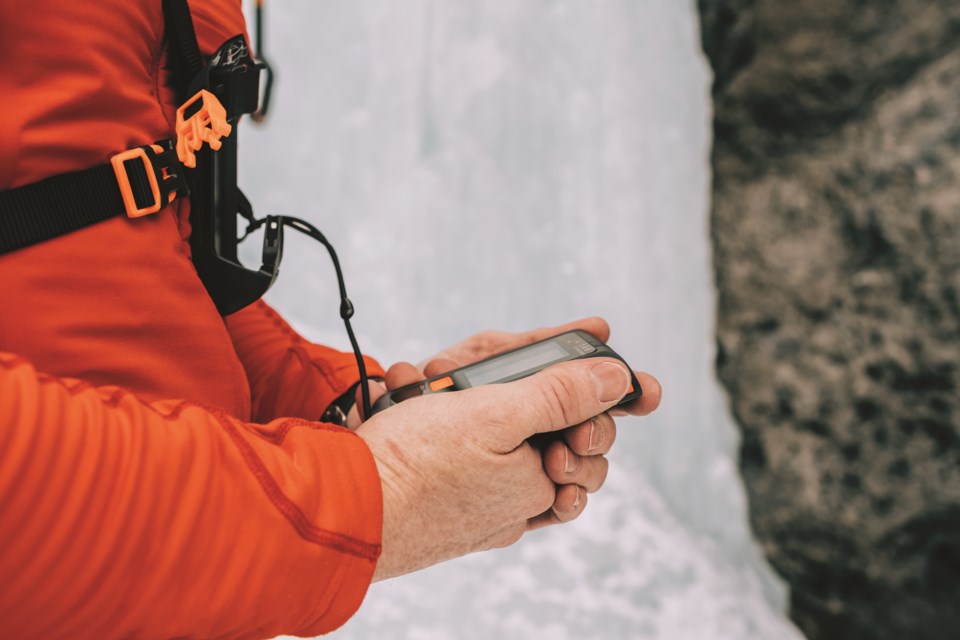Hey people—it’s winter! There’s not a ton of snow yet, but I’ve already had my first day on skis (OK, it was cross-country at Callaghan) and my mind has officially moved into alpine-anticipation mode. And you know what that means: skis ready, boots fitted, and backcountry gear checked, sorted and packed—including making sure my avalanche transceiver is in good shape. I’ll bet a lot of you are doing the same, but have you ever wondered how avy transceivers came into being? Well, if you have, I’m here to fill in the blanks for you.
People working in snow country in both Europe and North America had long lamented the difficulty of efficiently finding victims buried in avalanches. Back in the day, the only tool at their disposal was the wooden probe, which was both unreliable and inefficient—by the time a buried victim was actually found they had usually expired. By the mid-20th century, however, the avy-recovery conversation had settled on the idea for a compact, personal electronic device, worn by all in a backcountry party, that would not only transmit a signal in case someone was buried, but also double as a receiver that non-buried individuals could use to search for victims—hence the portmanteau transceiver.
The first such device (a.k.a. “avalanche beacon”) was invented in 1968 by Dr. John Lawton at the Cornell Aeronautical Laboratory in Buffalo, N.Y. Legendary American snow scientist and avalanche expert Ed LaChapelle, who’d spent time at the snow research institute in Davos, Switzerland, worked with Lawton on the design. A commercial version—called a “Skadi” after the Norse god of the wilderness—hit the market in 1971. By pulsing electricity through a copper coil, it radiated a dipole-flux magnetic field (think something that resembles a rounded bow-tie) with a signal transmitting at 2.275 kHz. The receiving part of the unit could pick up this signal and convert it into a sound heard through an earphone that became louder as users got closer to a victim. Still, maximum range for the signal wasn’t that great—about 27 metres—and the directional antenna was a crude approximation of what was actually needed.
In 1986, the frequency of most transceivers increased to 457 kHz to provide a greater range (50 to 70 metres). Employed by a range of analog transceivers (the Ortovox F1 was a favourite for the next decade), the new frequency was adopted by the International Commission for Alpine Rescue as an industry standard, and eventually entrenched by the American Society for Testing and Materials, an international standardization organization, in 1996. Only a year later, Colorado-based cottage industry Backcountry Access launched the first digital transceiver—the DTS Tracker—to much acclaim. Built around microprocessors that overcame some of the human-error in searching, it was both more user-friendly and faster working, offering a higher victim recovery rate. Cowed by this much greater level of utility, other manufacturers soon followed suit until digital became the new technological norm.
Digital transceivers use both signal strength and the dipole flux pattern to compute distance and direction to a buried transceiver; this requires at least two antennae, although most modern versions have three. Direction to the buried transceiver is indicated as an arrow on an LCD display, and audio tones at varying pitch or frequency guide the rescuer to single or multiple-burials, each of which can be digitally flagged.
Generally speaking, beacons fit into two categories—those for recreational use and those geared towards snow professionals like guides, instructors, and patrollers. If you’re new to backcountry travel, simpler is almost always better. I can tell you from experience that if a slide happens, the last thing you want to be doing is scrolling through setting options trying to find search mode. Because cost always corresponds to complexity, backcountry newbies definitely don’t need to shell out for pro models. If you are a pro, however, you may appreciate the increased functionality of the premium versions: better search range, battery life and processing speed, detailed display graphics, and state-of-the-art features like a U-turn indicator to keep you searching in the right direction. Regardless of your place on this continuum, digital tech marches on, and what comprises “basic” in a beacon is evolving quickly.
Bluetooth (for downloading new software) has become an option, and last season saw the release of Ortovox’s “Diract Voice”—an innovative transceiver that issues verbal commands like “run,” “walk,” and “go down to the snow surface” to keep the searcher’s eyes in front of them rather than fixated on the device. It also has a rechargeable lithium-ion battery, setting it apart in a sea of beacons that use standard alkaline batteries.
Future technological considerations include the capability of transmitting “live state” to searchers—i.e., letting a searcher know whether a buried individual is still alive—as well as who that individual is, a moral can of worms that much ink has been expended on (you can imagine the issues here). With backcountry travel growing by leaps and bounds, the current Holy Grail is a smartphone app that could be used as a transceiver, something the industry would either push back on, or take a lead role in licensing.
But this is getting ahead of the simple issue of being ready for the season. Is your beacon working? Do you have fresh batteries? Have you practiced your searching? Good—because the snow is coming.
Leslie Anthony is a Whistler-based author, editor, biologist and bon vivant who has never met a mountain he didn’t like.




